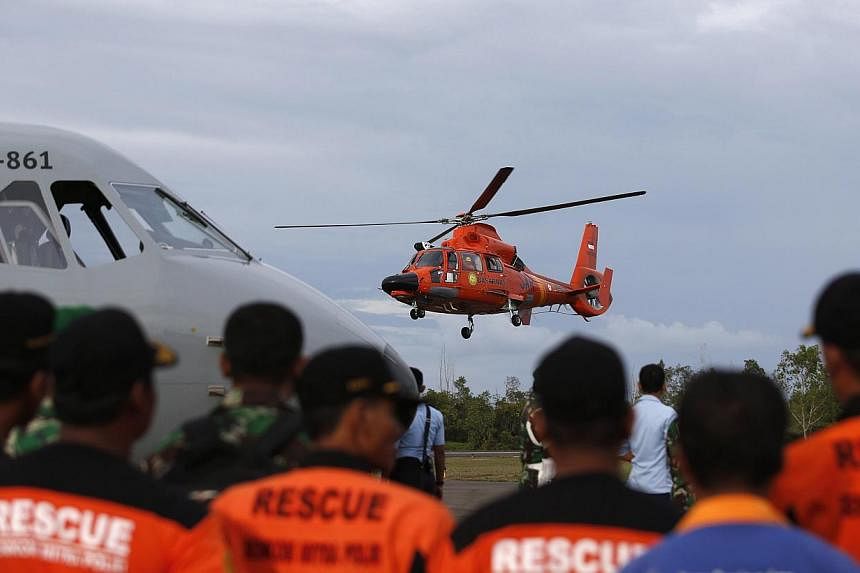Indonesia AirAsia Flight QZ8501 that crashed into the Java Sea on Sunday was the third fatal incident last year involving airlines from South-east Asia. Coming only months after the devastating loss of Malaysia Airlines' Flight MH370 over the Indian Ocean and Flight MH17 over Ukraine, the latest incident would have raised concerns among some travellers about flying on South-east Asian airlines, particularly Malaysian carriers.
To begin with, we should note that Indonesia AirAsia is not a Malaysian carrier. It is an Indonesian airline that is majority-owned by Indonesian interests. On paper, the AirAsia group from Malaysia owns only a minority stake. The group has similar minority holdings in joint-venture subsidiaries in Thailand, the Philippines, India and, soon, Japan. But since all these subsidiaries use the common AirAsia brand, the association with Malaysia is naturally very strong.
While some travellers could be rattled, AirAsia will likely weather the storm. After all, it is the market leader in Asia for low-cost airlines and has built a strong following for affordable and safe flying. Until QZ8501, AirAsia had flown more than 200 million passengers on its network, including on its long-haul arm AirAsia X, without losing a plane.
Helmed by its charismatic founder and chief executive Tony Fernandes, the airline has gained a reputation for being the common person's carrier against the more expensive full-service airlines. In the process, Mr Fernandes and his staff have gained the loyalty of millions of middle-class Asians for whom flying has become an affordable reality. It is unlikely that one unfortunate incident will change this.
That said, the challenge must be for AirAsia to disprove any notion that the crash had anything to do with the low-cost model. The maintenance regimes and safety records of AirAsia and other reputable low-cost carriers suggest that they are as safe as any other airline. What is worrying, though, is the exponential growth in flights that has led to congestion over Asian skies. When Flight QZ8501 asked to climb to a higher altitude, air traffic controllers advised that there were already other planes there. This illustrates not only the crowded airspace, but also the critical role of air traffic control.
In recent years, more than 1,000 aircraft have been ordered by South-east Asian airlines alone, particularly the low-cost leaders AirAsia and Lion Air. The shortage of trained pilots and personnel to fly and maintain these planes is a major concern, as is the adequacy of air traffic control facilities. The crunch can only become more acute as the South-east Asian region prepares for greater liberalisation that will allow even more airlines to fly more routes.
Following the crash, could AirAsia lose its pole position to other low-cost rivals? While the business is brutally competitive, the reality is that there are few pan-Asian low-cost airlines with the scale, penetration and popularity of AirAsia. Due to its small home market in Malaysia, AirAsia had recognised early on that it had to expand its base. Because of restrictive rules in most countries that prohibit foreigners from holding majority stakes in local airlines, AirAsia innovated by setting up minority-owned joint-venture subsidiaries all over Asia. Even though these are technically separate airlines, their common branding and single Internet booking platform ensure that they are indistinguishable in the passengers' minds.
While other low-cost carriers have since copied AirAsia's pioneering joint-venture model, few have achieved such deep cross-border penetration and brand loyalty. The Jetstar group, linked to Australia's Qantas, comes close, with its subsidiaries in Singapore, Vietnam and Japan. Lion Air, a huge Indonesian low-cost carrier with largely domestic operations, has only recently started subsidiaries in Malaysia and Thailand. Vietnam's VietJet Air has a small Thai subsidiary, while Singapore's Tigerair has had to give up its loss-making units in Australia, the Philippines and Indonesia. AirAsia's early-mover advantage and network scale will, thus, allow it to retain an edge.
Of course, how it manages the ongoing crisis is critical. So far, Mr Fernandes has done well with his highly personal Twitter updates and characteristic openness with the families and media. Much depends on the cause of the crash, as will hopefully be revealed by the aircraft's black boxes. If it is determined to be weather-related, as has been widely speculated, or even engine failure, the travelling public is likely to see this as a one-off event.
Ultimately, airlines and governments must ensure that the explosive growth of aviation in Southeast Asia, particularly in the low-cost sector, is accompanied by stringent maintenance programmes, highly trained pilots and personnel, and adequate air traffic and airport infrastructure. At the same time, the growing number of low-cost subsidiaries raises the question of consistency of standards across the different units' fleets. If operations are run using a common brand, the public will rightly want reassurance that airlines and governments are applying the same high safety standards across fleets.
In the meantime, incidents like the AirAsia crash are unlikely to affect the long-term appetite for low-cost air travel. For one thing, the public has simply got used to everyday low fares. Low-cost carriers will continue to benefit ordinary people, stimulate local economies and bring the region closer. They will simply have to carry on proving that flying can be both affordable and safe.
The writer is professor of aviation law at the National University of Singapore.

